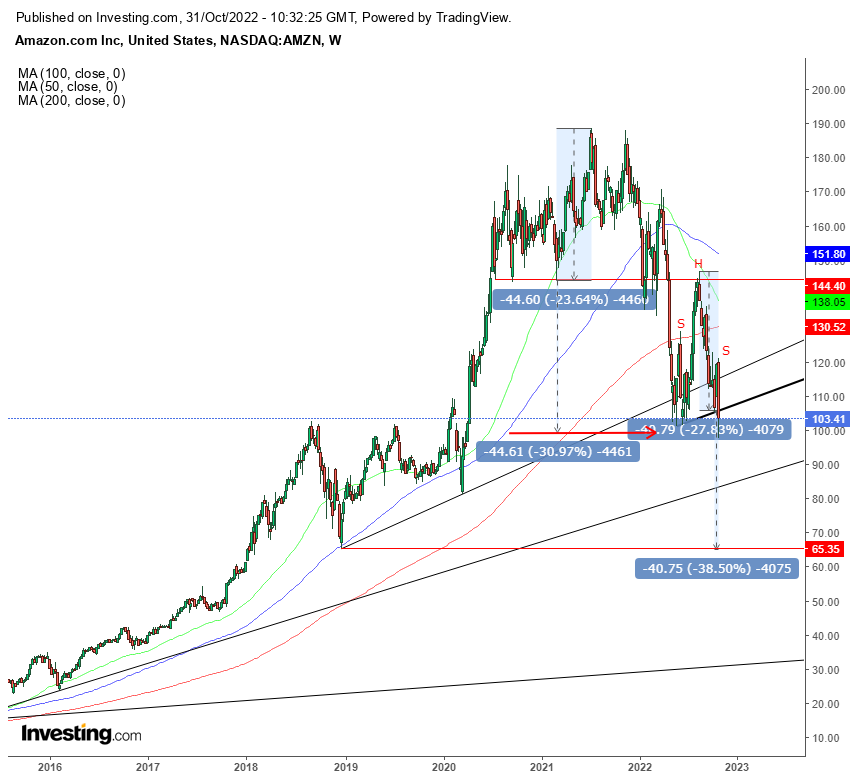Amazon.com (NASDAQ:AMZN) sold off after posting earnings Thursday after hours. Although Q3 sales and earnings were as expected, weak cloud sales disappointed investors. Amazon Web Services sold $20.5 billion, short of the $21.1 billion estimate.
In other words, the cloud computing unit's growth dropped to 27.5%, well below the 32% analysts priced in, its weakest growth on record since the company began reporting on this section's finances. Moreover, Amazon provided weak guidance, warning that Q4 YoY's growth will drop to 8%, from 6%, a $140 billion to $148 billion revenue, below the $155.15 billion expected.
Amazon's woes are part of the big-tech challenge after the economy registered a technical recession and is headed to a full-on recession that even politicians won't be able to deny.
So, is Amazon a buy after losing 48.25% since its Jul 2021 all-time high? Fundamental analysts think so. TipRanks provides an average price target based on 33 analysts of $141.31, reflecting a 36.65% advance from the current $103.41 price. However, fundamental analysts' targets are within 12 months. They don't claim to know when their target will be met. So, even if they're right on the money, sometime within the next 12 months, they aren't necessarily claiming the stock wouldn't go down first.
Now, let's look at the technical approach.

The stock topped out in April, and went on to materialize its target on Friday's selloff.
However, simultaneously, the price completed another H&S of the continuation variety. The pattern's $40 height implies a $65 target. If all the invested interest causes a chain reaction for another 38.5% drop, the stock will have fallen through another uptrend line since the Jan. 2015 low.
The next significant support could be the $65 Dec. 2018 low. That's right. The H&S continuation pattern coincides with the Dec. 2018 low, providing technical support for a new uptrend. However, if accumulation fails, the next support will be the uptrend line since the 2008 bottom, currently at the low $30s.
Trading Strategies
Conservative traders should wait for the price to retest the H&S continuation pattern's neckline and demonstrate ongoing resistance.
Moderate traders would wait for a return move for a closer entry if not confirmed.
Aggressive traders could short at will, according to their strategy. In case you don't have one, factoring your timing, budget, and temperament, as you should, here's a generic example:
Trade Samples - Short:
Aggressive
- Entry: $103
- Stop-Loss: $108
- Risk: $5
- Target: $68
- Reward: $35
- Risk-Reward Ratio: 1:7
Moderate
- Entry: $108
- Stop-Loss: $110
- Risk: $2
- Target: $98
- Reward: $10
- Risk-Reward Ratio: 1:5
Conservative
- Entry: $105 (after retesting $108)
- Stop-Loss: $110
- Risk: $5
- Target: $90
- Reward: $15
- Risk-Reward Ratio: 1:3
Disclaimer: The author has no position in the instruments mentioned in this article.
